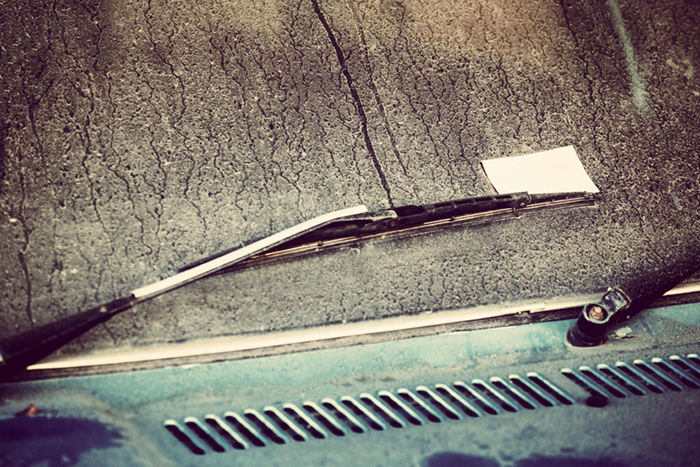Why Cars Get Dirty When Left Outside: Natural Causes Explained

When you leave your car outside, even for just a few days, it can quickly lose its shine. From dusty rain showers to bird droppings, nature has plenty of ways to leave your vehicle looking less than fresh.
At I Love meet and greet parking, we know our customers care about returning to a car that looks good after their trip. While our primary focus is delivering the UK’s most convenient airport parking service, we also take pride in looking after your vehicle. That’s why, where operationally possible, we give cars a quick jet wash to rinse away heavy dust or bird droppings before you return.
However, there are some natural, unavoidable factors that affect all cars parked outside – even when you use a premium meet and greet parking service. Let’s take a closer look at the main causes.
Dusty Rain and Saharan Dust
It’s not your imagination: sometimes, after a shower, your car looks dirtier than before. This is because rain doesn’t always fall as pure water – it collects dust, pollen, and tiny particles on its journey down through the atmosphere. When the rain evaporates, it leaves those particles behind as streaks and smears.
As New Scientist explains, some of the dust that falls with rain in the UK can travel thousands of miles, including fine sand blown across from the Sahara Desert (New Scientist, 2020). These “Saharan dust events” happen several times a year, leaving a thin orange or brown film across cars.
If your car is parked outside during one of these events, it’s almost impossible to avoid that dusty coating.
Heatwaves and Sun Damage
Weather isn’t just about dust and rain – heat can also impact your car. The summer of 2025 has already seen multiple heatwaves. The Met Office recorded 11 days where temperatures reached 30°C or higher, including the year’s hottest day of 35.8°C in Kent (Met Office data via British Red Cross, 2025). On 11 August, the UK Health Security Agency even issued an amber heat health alert during what is now the fourth heatwave of the year.
For cars, these conditions can cause:
- Fading paintwork as UV rays break down pigments.
- Cracking and peeling where heat expansion stresses paint.
- Water spots from rapid evaporation.
- Contaminants like bird droppings or sap baking onto the paint, making them harder to remove.
Parking outdoors in hot conditions makes vehicles more vulnerable to this type of damage, which is why regular cleaning and protective coatings are so important.
Bird Droppings
Bird droppings are one of the most common natural contaminants cars face. They’re unsightly, unpleasant, and unfortunately corrosive. Droppings are acidic, and when combined with heat, they can etch into paintwork.
Car colour and parking location play a role. Birds often perch on trees, lampposts, or power lines, meaning cars below are more at risk. Anecdotal evidence even suggests that red cars get targeted more often than other colours (Reddit discussions, 2023).
Rain can temporarily reduce bird activity, but over longer stays outdoors, droppings are almost unavoidable.
Tree Sap and Pollen
Shady trees may keep your car cooler, but they can also cause their own mess. Sticky tree sap can drip onto the surface, where it hardens in the sun and bonds to the paint. Removing it later can be time-consuming and sometimes requires specialist cleaning products.
During spring and summer, pollen adds another layer of grime. Cars often develop a yellow or green powdery coating, which, when mixed with rain, can form stubborn streaks.
Airborne Dust and Grit
Even on clear days, the air contains particles of dust, grit, and pollution. In windy or dry conditions, these settle on cars left outside. Near the coast, salt particles can also accumulate. Over time, this creates a dull, gritty layer on your paintwork.
With the Met Office predicting prolonged dry spells during UK heatwaves, airborne dust is only becoming more common – meaning cars parked outside are more likely to pick it up.
Water Spots from Rainfall
While rain can rinse away some dirt, it often leaves behind mineral deposits when it dries. These white or grey water spots are particularly visible on dark-coloured vehicles. Left untreated, they can even etch into paint and glass.
How I Love meet and greet Parking Helps
At I Love meet and greet airport parking, we can’t control the weather, birds, or Saharan dust clouds – but we can take small steps to help.
When operationally possible, our team will rinse cars with a jet washer to remove the worst of the natural contaminants, such as bird droppings or heavy dust if they are present just before returning your car. This ensures that, after your journey, your car is fresher and more welcoming when you collect it.
That said, it’s important for customers to understand that meet and greet parking means your car is stored safely outdoors, and natural factors like dust, rain, and bird activity are outside of our control. We always recommend regular cleaning and the use of protective waxes or coatings to minimise long-term effects.
Final Thoughts
From dusty Saharan rain to summer heatwaves, tree sap, and bird droppings, nature has countless ways to leave its mark on your car. With the UK now experiencing hotter summers and more extreme weather, outdoor vehicles face more exposure than ever.
At I Love meet and greet, we’re proud to provide the most convenient airport parking service in the UK. And while natural contaminants are unavoidable when cars are parked outside, we’ll always do what we can to minimise their impact.
So next time you return from holiday and find your car still looking fresh, you’ll know our team has given it some extra care – because with meet and greet parking, convenience and customer service always come first.
By stephen forster at 2 Sep 2025